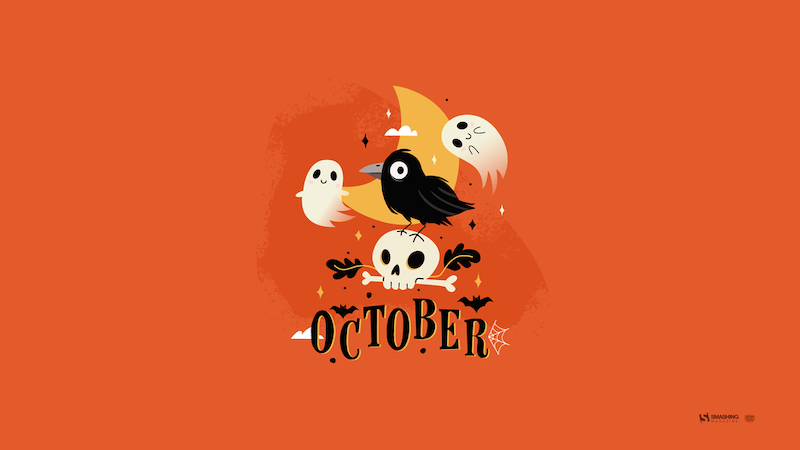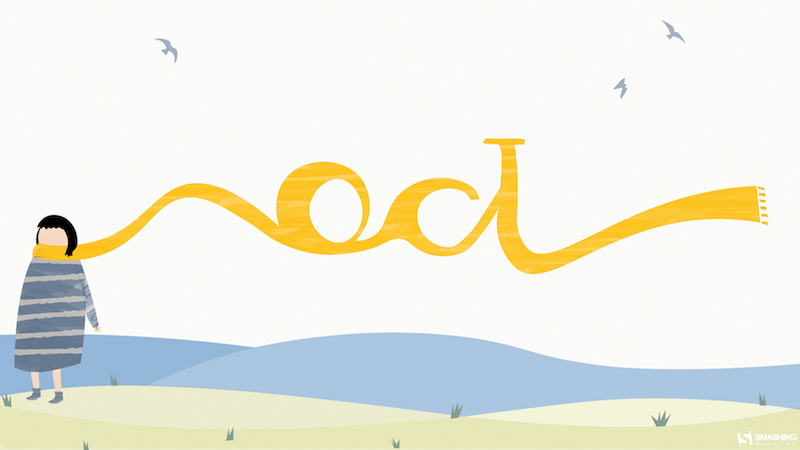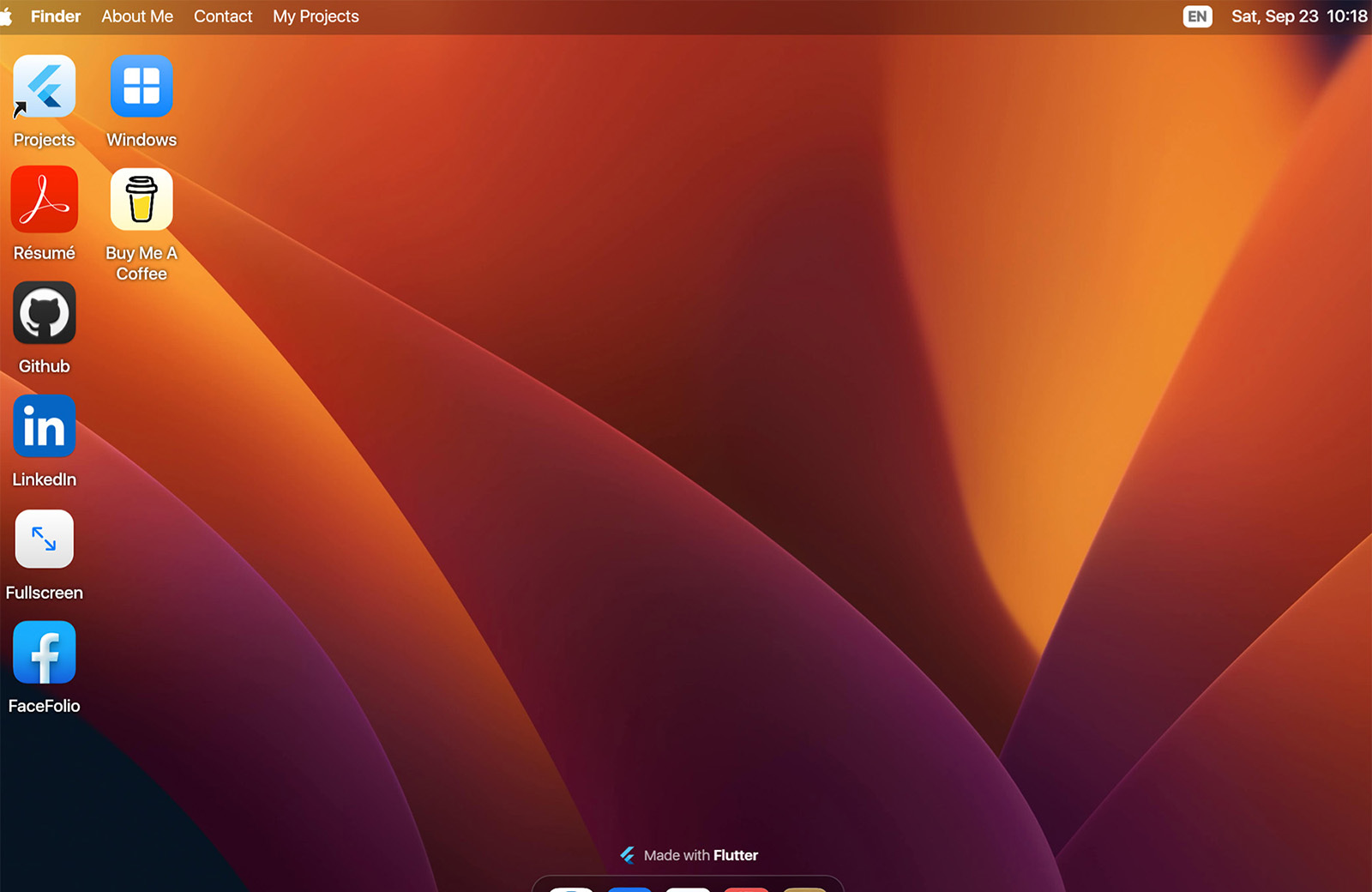Dancing Leaves And Spooky Fellows (October 2023 Wallpapers Edition)
The leaves are shining in the most beautiful colors and pumpkins are taking over the front porches. It’s time to welcome the spookiest of all months: October! To get your desktop ready for fall and the upcoming Halloween season, artists and designers from across the globe once again challenged their creative skills and designed inspiring wallpapers for you to indulge in.
The wallpapers in this post come in versions with and without a calendar for October 2023 and can be downloaded for free. And since so many beautiful and unique designs evolve around our little wallpapers challenge every month, we also dived into our archives to find some timeless October treasures from past years to add to the collection. Maybe you’ll rediscover one of your almost-forgotten favorites in this post, too? A huge thank you to everyone who shared their wallpaper with us this month! Happy October!
- You can click on every image to see a larger preview,
- We respect and carefully consider the ideas and motivation behind each and every artist’s work. This is why we give all artists the full freedom to explore their creativity and express emotions and experience through their works. This is also why the themes of the wallpapers weren’t anyhow influenced by us but rather designed from scratch by the artists themselves.
-
Submit a wallpaper!
Did you know that you could get featured in our next wallpapers post, too? We are always looking for creative talent.
Autumn’s Splendor
“The transition to autumn brings forth a rich visual tapestry of warm colors and falling leaves, making it a natural choice for a wallpaper theme.” — Designed by Farhan Srambiyan from India.
- preview
- with calendar: 1280×960, 1280×1024, 1400×1050, 1440×900, 1600×1200, 1680×1050, 1680×1200, 1920×1080, 1920×1200, 1920×1440, 2560×1440
- without calendar: 1280×960, 1280×1024, 1400×1050, 1440×900, 1600×1200, 1680×1050, 1680×1200, 1920×1080, 1920×1200, 1920×1440, 2560×1440
Dancing Leaves Of October
“Before it becomes winter, we spend beautiful autumn days enjoying the beautiful colors and autumn moods. So I designed this wallpaper to remember the impressions and colors in the city park.” — Designed by Stephan Bender from Germany.
- preview
- with calendar: 320×480, 640×480, 800×480, 800×600, 1024×768, 1024×1024, 1152×864, 1280×720, 1280×800, 1280×960, 1280×1024, 1400×1050, 1440×900, 1600×1200, 1680×1050, 1680×1200, 1920×1080, 1920×1200, 1920×1440, 2560×1440
- without calendar: 320×480, 640×480, 800×480, 800×600, 1024×768, 1024×1024, 1152×864, 1280×720, 1280×800, 1280×960, 1280×1024, 1400×1050, 1440×900, 1600×1200, 1680×1050, 1680×1200, 1920×1080, 1920×1200, 1920×1440, 2560×1440
Embracing Autumn’s Beauty
“We were inspired by the breathtaking beauty of autumn, with its colorful foliage and the symbolic pumpkin, which epitomizes the season. Incorporating typography allows us to blend aesthetics and functionality, making the calendar not only visually appealing but also useful.” — Designed by WPclerks from India.
- preview
- with calendar: 1280×960, 1280×1024, 1400×1050, 1440×900, 1600×1200, 1680×1050, 1680×1200, 1920×1080, 1920×1200, 1920×1440, 2560×1440
- without calendar: 1280×960, 1280×1024, 1400×1050, 1440×900, 1600×1200, 1680×1050, 1680×1200, 1920×1080, 1920×1200, 1920×1440, 2560×1440
National Fossil Day
“Join us in commemorating National Fossil Day, a day dedicated to honoring the wonders of Earth’s prehistoric past. On this special day, we invite you to step back in time and explore the remarkable world of fossils. These ancient remnants of life on our planet offer a glimpse into the evolution of life, from the tiniest microorganisms to the towering giants that once roamed the Earth.” — Designed by Boris Rabasovic from Serbia.
- preview
- with calendar: 320×480, 640×480, 800×480, 800×600, 1024×768, 1024×1024, 1152×864, 1280×720, 1280×800, 1280×960, 1280×1024, 1400×1050, 1440×900, 1600×1200, 1680×1050, 1680×1200, 1920×1080, 1920×1200, 1920×1440, 2560×1440
- without calendar: 320×480, 640×480, 800×480, 800×600, 1024×768, 1024×1024, 1152×864, 1280×720, 1280×800, 1280×960, 1280×1024, 1400×1050, 1440×900, 1600×1200, 1680×1050, 1680×1200, 1920×1080, 1920×1200, 1920×1440, 2560×1440
The Crow And The Ghosts
“If my heart were a season, it would be autumn.” — Designed by Lívia Lénárt from Hungary.
- preview
- without calendar: 320×480, 1024×1024, 1280×1024, 1600×1200, 1680×1200, 1920×1080, 1920×1200, 1920×1440, 2560×1440, 3840×2160
Sleeping Beauty
“Sleeping Beauty is a classic fairy tale that has been adapted into various forms of literature, film, and other media over the years. The story typically revolves around a beautiful princess who is cursed to fall into a deep sleep for a specific period, often after pricking her finger on a spindle or needle. The curse is usually cast by an evil fairy or sorceress. In most versions of the story, the princess can only be awakened from her slumber by the kiss of a prince who truly loves her.” — Designed by Bhabna Basak from India.
- preview
- with calendar: 1440×900, 1600×1200, 1680×1050, 1680×1200, 1920×1080, 1920×1200, 1920×1440, 2560×1440
- without calendar: 1440×900, 1600×1200, 1680×1050, 1680×1200, 1920×1080, 1920×1200, 1920×1440, 2560×1440
Happy Halloween
Designed by Ricardo Gimenes from Sweden.
- preview
- with calendar: 640×480, 800×480, 800×600, 1024×768, 1024×1024, 1152×864, 1280×720, 1280×800, 1280×960, 1280×1024, 1366×768, 1400×1050, 1600×1200, 1680×1050, 1680×1200, 1920×1080, 1920×1200, 1920×1440, 2560×1440, 3840×2160
- without calendar: 640×480, 800×480, 800×600, 1024×768, 1024×1024, 1152×864, 1280×720, 1280×800, 1280×960, 1280×1024, 1366×768, 1400×1050, 1600×1200, 1680×1050, 1680×1200, 1920×1080, 1920×1200, 1920×1440, 2560×1440, 3840×2160
A Walk Through Atoms
“We leave the madness of September to begin this October in a much more serene way. We are entering autumn, one of my favorite months, and we travel to Brussels to enjoy the city and be able to walk around while the temperatures allow.” — Designed by Veronica Valenzuela Jimenez from Spain.
- preview
- with calendar: 640×480, 800×480, 1024×768, 1280×720, 1280×800, 1440×900, 1600×1200, 1920×1080, 1920×1440, 2560×1440
- without calendar: 640×480, 800×480, 1024×768, 1280×720, 1280×800, 1440×900, 1600×1200, 1920×1080, 1920×1440, 2560×1440
Lack Of Self-Reflection
Designed by Ricardo Gimenes from Sweden.
- preview
- with calendar: 640×480, 800×480, 800×600, 1024×768, 1024×1024, 1152×864, 1280×720, 1280×800, 1280×960, 1280×1024, 1366×768, 1400×1050, 1440×900, 1600×1200, 1680×1050, 1680×1200, 1920×1080, 1920×1200, 1920×1440, 2560×1440, 3840×2160
- without calendar: 640×480, 800×480, 800×600, 1024×768, 1024×1024, 1152×864, 1280×720, 1280×800, 1280×960, 1280×1024, 1366×768, 1400×1050, 1440×900, 1600×1200, 1680×1050, 1680×1200, 1920×1080, 1920×1200, 1920×1440, 2560×1440, 3840×2160
Oh!ctober
“I was influenced by the changing colors of nature. Fall is a busy period, so I wanted to make a messy drawing. There are things turning around, like a circle. It’s the link with the first letter of this month.” — Designed by Philippe Brouard from France.
- preview
- with calendar: 1024×768, 1366×768, 1600×1200, 1920×1080, 1920×1200, 1920×1440, 2560×1440, 2560×1600, 2880×1800, 3840×2160
- without calendar: 1024×768, 1366×768, 1600×1200, 1920×1080, 1920×1200, 1920×1440, 2560×1440, 2560×1600, 2880×1800, 3840×2160
Oldies But Goodies
Creepy Halloween fellows, a nice cup of tea on a rainy day, and magical fall forests — the October wallpapers that we rediscovered in our archives pay tribute to all those big and small October moments. Please note that these designs don’t come with a calendar.
The Night Drive
Designed by Vlad Gerasimov from Georgia.
- preview
- without calendar: 800×480, 800×600, 1024×600, 1024×768, 1152×864, 1280×720, 1280×800, 1280×960, 1280×1024, 1366×768, 1440×900, 1440×960, 1400×1050, 1600×900, 1600×1200, 1680×1050, 1680×1200, 1920×1080, 1920×1200, 1920×1440, 2560×1440, 2560×1600, 2880×1800, 3072×1920, 3840×2160, 5120×2880
Magical October
“‘I’m so glad I live in a world where there are Octobers.’ (L. M. Montgomery, Anne of Green Gables)” — Designed by Lívi Lénárt from Hungary.
- preview
- without calendar: 320×480, 640×480, 1024×768, 1024×1024, 1280×1024, 1400×1050, 1680×1200, 1920×1080, 1920×1200, 2560×1440
Dreamy Autumn Girl
“Our designers were inspired by the coziness of autumn and the mood that it evokes — the only desire that appears is to put on a warm cozy sweater, take a cup of warm tea, and just enjoy the view outside the window.” — Designed by MasterBundles from Ukraine.
- preview
- without calendar: 320×480, 640×480, 800×480, 800×600, 1024×768, 1024×1024, 1152×864, 1280×720, 1280×800, 1280×960, 1280×1024, 1366×768, 1400×1050, 1440×900, 1600×1200, 1680×1050, 1680×1200, 1920×1080, 1920×1200, 1920×1440, 2560×1440
Autumn Vibes
“Autumn has come, the time of long walks in the rain, weekends spent with loved ones, with hot drinks, and a lot of tenderness. Enjoy.” — Designed by LibraFire from Serbia.
- preview
- without calendar: 320×480, 640×480, 800×480, 800×600, 1024×768, 1024×1024, 1152×864, 1280×720, 1280×800, 1280×960, 1280×1024, 1366×768, 1400×1050, 1440×900, 1600×1200, 1680×1050, 1680×1200, 1920×1080, 1920×1200, 1920×1440, 2560×1440
Goddess Makosh
“At the end of the kolodar, as everything begins to ripen, the village sets out to harvesting. Together with the farmers goes Makosh, the Goddess of fields and crops, ensuring a prosperous harvest. What she gave her life and health all year round is now mature and rich, thus, as a sign of gratitude, the girls bring her bread and wine. The beautiful game of the goddess makes the hard harvest easier, while the song of the farmer permeates the field.” — Designed by PopArt Studio from Serbia.
- preview
- without calendar: 320×480, 640×480, 800×480, 800×600, 1024×768, 1024×1024, 1152×864, 1280×720, 1280×800, 1280×960, 1280×1024, 1366×768, 1400×1050, 1440×900, 1600×1200, 1680×1050, 1680×1200, 1920×1080, 1920×1200, 1920×1440, 2560×1440
Bird Migration Portal
“October is a significant month for me because it is when my favorite type of bird travels south. For that reason I have chosen to write about the swallow. When I was young, I had a bird’s nest not so far from my room window. I watched the birds almost every day; because those swallows always left their nests in October. As a child, I dreamt that they all flew together to a nicer place, where they were not so cold.” — Designed by Eline Claeys from Belgium.
- preview
- without calendar: 1280×1024, 1440×900, 1600×1200, 1680×1050, 1680×1200, 1920×1080, 1920×1200, 1920×1440, 2560×1440
Game Night And Hot Chocolate
“To me, October is all about cozy evenings with hot chocolate, freshly baked cookies, and a game night with friends or family.” — Designed by Lieselot Geirnaert from Belgium.
First Scarf And The Beach
“When I was little, my parents always took me and my sister for a walk at the beach in Nieuwpoort, we didn’t really do those beach walks in the summer but always when the sky started to turn grey and the days became colder. My sister and I always took out our warmest scarfs and played in the sand while my parents walked behind us. I really loved those Saturday or Sunday mornings where we were all together. I think October (when it’s not raining) is the perfect month to go to the beach for ‘uitwaaien’ (to blow out), to walk in the wind and take a break and clear your head, relieve the stress or forget one’s problems.” — Designed by Gwen Bogaert from Belgium.
Haunted House
“Love all the Halloween costumes and decorations!” — Designed by Tazi from Australia.
- preview
- without calendar: 320×480, 640×480, 800×600, 1024×768, 1152×864, 1280×720, 1280×960, 1600×1200, 1920×1080, 1920×1440, 2560×1440
Ghostbusters
Designed by Ricardo Gimenes from Sweden.
- preview
- without calendar: 320×480, 640×480, 800×480, 800×600, 1024×768, 1024×1024, 1152×864, 1280×720, 1280×800, 1280×960, 1280×1024, 1366×768, 1400×1050, 1440×900, 1600×1200, 1680×1050, 1680×1200, 1920×1080, 1920×1200, 1920×1440, 2560×1440
Spooky Town
Designed by Xenia Latii from Germany.
- preview
- without calendar: 320×480, 640×480, 800×480, 800×600, 1024×768, 1152×864, 1280×720, 1280×800, 1280×960, 1280×1024, 1366×768, 1400×1050, 1440×900, 1600×1200, 1680×1050, 1680×1200, 1920×1080, 1920×1200, 1920×1440, 2560×1440
Hello Autumn
“Did you know that squirrels don’t just eat nuts? They really like to eat fruit, too. Since apples are the seasonal fruit of October, I decided to combine both things into a beautiful image.” — Designed by Erin Troch from Belgium.
- preview
- without calendar: 320×480, 800×480, 1024×1024, 1280×800, 1366×768, 1600×1200, 1680×1050, 1680×1200, 1920×1440, 2560×1440
Shades Of Gold
“We are about to experience the magical imagery of nature, with all the yellows, ochers, oranges, and reds coming our way this fall. With all the subtle sunrises and the burning sunsets before us, we feel so joyful that we are going to shout it out to the world from the top of the mountains.” — Designed by PopArt Studio from Serbia.
- preview
- without calendar: 320×480, 640×480, 800×480, 800×600, 1024×768, 1024×1024, 1152×864, 1280×720, 1280×800, 1280×960, 1280×1024, 1366×768, 1400×1050, 1440×900, 1600×1200, 1680×1050, 1680×1200, 1920×1080, 1920×1200, 1920×1440, 2560×1440
The Art Of History
“History has always fascinated me. I started looking for people who changed the world and history and who were born in October. I discovered different people like John Lennon, Picasso, Niels Bohr… In the end, it was Gandhi who gave me the most inspiration. It’s a work in which you see the variety of colors that are both a call against racism and inequality and also a wink to Picasso’s oeuvre.” — Designed by Johannes Hermans from Belgium.
Say Bye To Summer
“And hello to autumn! The summer heat and high season is over. It’s time to pack our backpacks and head for the mountains — there are many treasures waiting to be discovered!” Designed by Agnes Sobon from Poland.
Tea And Cookies
“As it gets colder outside, all I want to do is stay inside with a big pot of tea, eat cookies and read or watch a movie, wrapped in a blanket. Is it just me?” — Designed by Miruna Sfia from Romania.
- preview
- without calendar: 320×480, 640×480, 800×480, 800×600, 1024×768, 1024×1024, 1152×864, 1280×720, 1280×800, 1280×960, 1280×1024, 1440×900, 1440×1050, 1600×1200, 1680×1050, 1680×1200, 1920×1080, 1920×1200, 1920×1440, 2560×1440
Flying Home For Halloween
“You can only fully master the sky wearing an aviator hat and goggles. Like this little bat, flying home to celebrate Halloween with his family and friends.” — Designed by Franke Margrete from the Netherlands.
- preview
- without calendar: 320×480, 360×480, 376×668, 768×1024, 1024×1024, 1280×720, 1280×800, 1280×1024, 1366×768, 1366×1050, 1440×900, 1536×864, 1600×900, 1920×1080, 1920×1440, 2560×1440, 2560×1600, 3840×2160
Hanlu
“The term ‘Hanlu’ literally translates as ‘Cold Dew.’ The cold dew brings brisk mornings and evenings. Eventually the briskness will turn cold, as winter is coming soon. And chrysanthemum is the iconic flower of Cold Dew.” — Designed by Hong, ZI-Qing from Taiwan.
- preview
- without calendar: 640×480, 800×600, 1024×768, 1080×1920, 1152×864, 1280×720, 1280×960, 1366×768, 1400×1050, 1600×1200, 1920×1080, 1920×1440, 2560×1440
Autumn Deer
Designed by Amy Hamilton from Canada.
- preview
- without calendar: 1024×768, 1280×720, 1280×800, 1280×960, 1280×1024, 1400×1050, 1440×900, 1600×1200, 1680×1050, 1920×1080, 1920×1200, 2048×1536, 2560×1440, 2880×1800
The Return
Designed by Ricardo Gimenes from Sweden.
- preview
- without calendar: 320×480, 640×480, 800×480, 800×600, 1024×768, 1024×1024, 1152×864, 1280×720, 1280×800, 1280×960, 1280×1024, 1366×768, 1400×1050, 1440×900, 1600×1200, 1680×1050, 1680×1200, 1920×1080, 1920×1200, 1920×1440, 2560×1440
Discovering The Universe!
“Autumn is the best moment for discovering the universe. I am looking for a new galaxy or maybe… a UFO!” — Designed by Verónica Valenzuela from Spain.
- preview
- without calendar: 800×480, 1024×768, 1152×864, 1280×800, 1280×960, 1440×900, 1680×1200, 1920×1080, 2560×1440
Trick Or Treat
“Have you ever wondered if all the little creatures of the animal kingdom celebrate Halloween as humans do? My answer is definitely ‘YES! They do!’ They use acorns as baskets to collect all the treats, pastry brushes as brooms for the spookiest witches and hats made from the tips set of your pastry bag. So, if you happen to miss something from your kitchen or from your tool box, it may be one of them, trying to get ready for All Hallows’ Eve.” — Designed by Carla Dipasquale from Italy.
- preview
- without calendar: 640×480, 800×600, 1024×768, 1280×960, 1440×900, 1600×1200, 1680×1200, 1920×1080, 1920×1440, 2560×1440
Boo!
Designed by Mad Fish Digital from Portland, OR.
- preview
- with calendar: 320×480, 1024×1024, 1280×720, 1680×1200, 1920×1080, 2560×1440
- without calendar: 320×480, 1024×1024, 1280×720, 1680×1200, 1920×1080, 2560×1440
Autumn Gate
“The days are colder, but the colors are warmer, and with every step we go further, new earthly architecture reveals itself, making the best of winters’ dawn.” — Designed by Ana Masnikosa from Belgrade, Serbia.
- preview
- without calendar: 320×480, 640×480, 800×480, 800×600, 1024×768, 1024×1024, 1152×864, 1280×720, 1280×800, 1280×960, 1280×1024, 1400×1050, 1440×900, 1600×1200, 1680×1050, 1680×1200, 1920×1080, 1920×1200, 1920×1440, 2560×1440
King Of The Pirates
Designed by Ricardo Gimenes from Sweden.
- preview
- with calendar: 640×480, 800×480, 800×600, 1024×768, 1024×1024, 1152×864, 1280×720, 1280×960, 1280×1024, 1366×768, 1400×1050, 1440×900, 1600×1200, 1680×1050, 1920×1080, 1920×1200, 1920×1440, 2560×1440, 3840×2160
- without calendar: 640×480, 800×480, 800×600, 1024×768, 1024×1024, 1152×864, 1280×720, 1280×960, 1280×1024, 1366×768, 1400×1050, 1440×900, 1600×1200, 1680×1050, 1920×1080, 1920×1200, 1920×1440, 2560×1440, 3840×2160
Omnomnomtober
“I’m just a sucker for Halloween, candy, tiny witches, and giant kittens. And you can’t tell me that October is not Halloween, because I’ve waited the whole year for this. I thought that I would make illustration central to this calendar so I started with the idea of a tiny witch who’s stolen a ton of candy along with her cat — who’s gotten herself in trouble and can’t unstick the bubble gum from her giant teeth. A typical Halloween scene, right?” — Designed by Kalashniköv from Spain.
- preview
- without calendar: 320×480, 640×480, 800×600, 1152×864, 1280×720, 1280×800, 1280×960, 1366×768, 1400×1050, 1440×900, 1600×1200, 1680×1050, 1920×1080, 1920×1200, 1920×1440, 2560×1440
Smashing Halloween
Designed by Ricardo Gimenes from Sweden.



















































